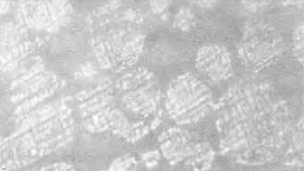1.INTRODUCTION
Ceramics have a wide variety of applications rangingfrom simple insulations to very complex surgicalimplants like artificial teeth, bones, joints, etc. The newclass of ceramics termed as the advanced ceramics alsofind numerous engineering applications as in internalcombustion (IC) engines, thermal barrier coatings,tougher metal cutting tools, etc due to their highstrength and toughness properties. The strength andmechanical behaviour of all these ceramics aredependent on their microstructures. Hence a study ofthe microstructure is essential and indispensable toattain the desired performance level of any ceramicmaterial.
2.EARLIER ETCHING METHODS
For microscopic observation, the material has to bepolished and etched. Etching is necessary to selectivelyattack and reveal the grain boundaries. Since ceramicsare chemically inert, they are not easily attacked by theetchants. Often hot etching is required to obtainsatisfactory microstructures. For example, alumina isetched' at 218 °C, magnesia with boiling phosphoricacid?, silicon carbide at 650 C, silicon nitride' at300 °C, yttria' at 300 °C and zirconia at 500 C.
3.CURRENT PROCEDURES
Due to its high strength, high toughness and highetching temperature", zirconia was chosen as' arepresentative of the difficult to etch’ variety ofceramics. Since etchants attack the grain boundariesonly chemically, ultrasonic machining was chosen tointroduce a mechanical atfack on the grain boundaries.In an ultrasonic machine, the work piece is subjectedto repeated abrasive action of an abrasive slurry beingdirected towards the work by an ultrasonically vibratingtool, The continuous acti-- of the abrasive slurry isexpected to attack and weaken the grain boundariesmechanically, thereby, facilitating easy chemicaletching.

Fig1
4.RESULTS
Specimen I was not at all attacked by the ctchant.Specimen Il which was subjected to ultrasonicmachining was easily etched at room tempcraturc itselfFigure 1 shows the microstructure of specimen Il. Thcplatelets are of tetragonal phasc, the white etchingportions are of monoclinic phasel" and the black spotsmay be due to grain pull out during grindingor duc toover etching.
5.CONCLUSIONS
From the above discussjon, it is clear that zirconiawhich was previously etched at 5() °C can now be ctchedat room temperature itself. Since there is nochemical reaction involved and as this techniqucproduces only a mechanical weakening of the grainboundaries, it is obvious that any ceramic can be casilyetched at room temperature (by the same etchant usedfor hot etching)if the specimen is subjected to ultrasonicmachining. The proportion of the abrasive in the slurrythe ultrasonic machining time, the composition of theetchant and the duration of etching are the parametersthat can be varied to suit the need for a particularceramic.
上一篇: 光刻烘烤过程中的晶圆翘曲检测
下一篇: 湿蚀刻法制备的LiNbO3